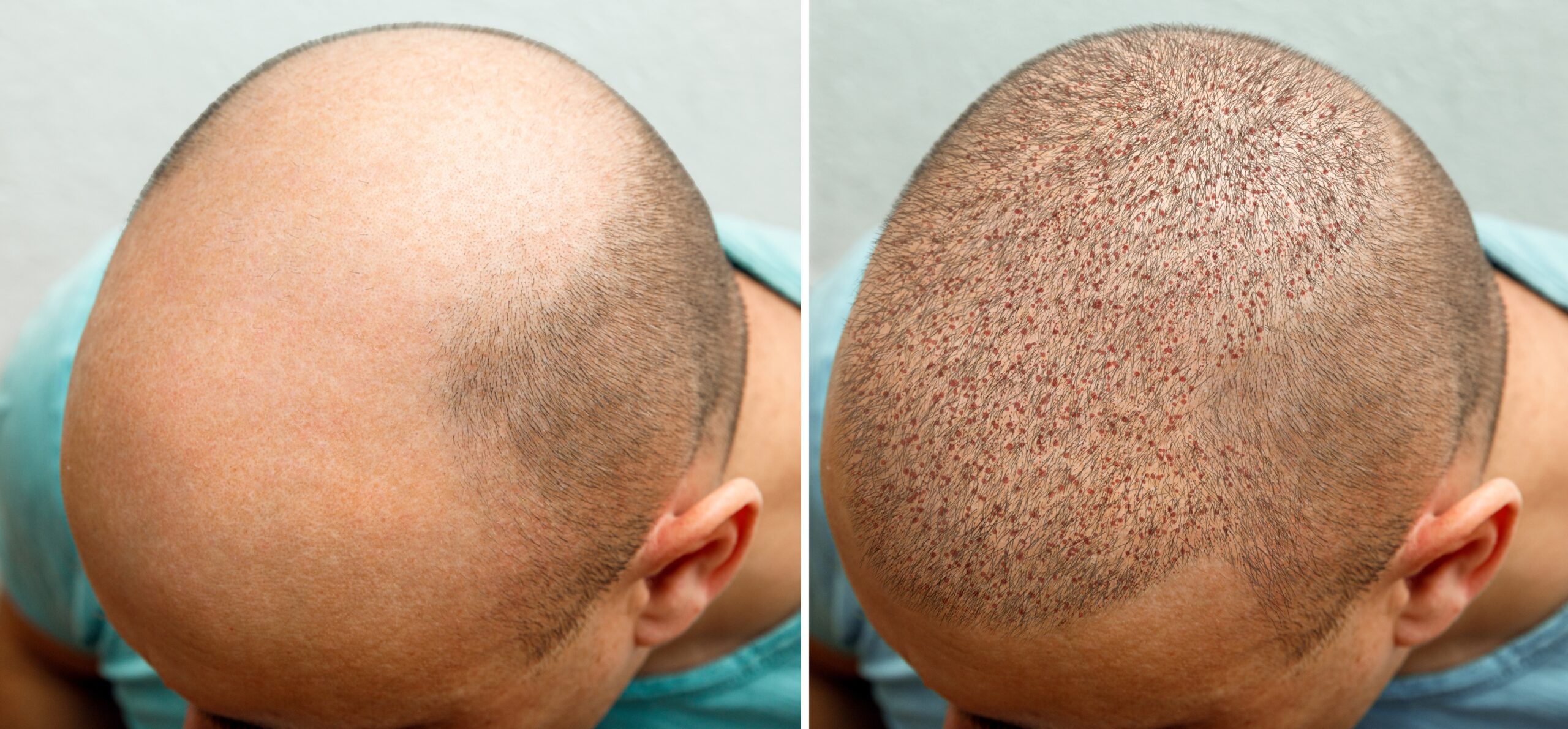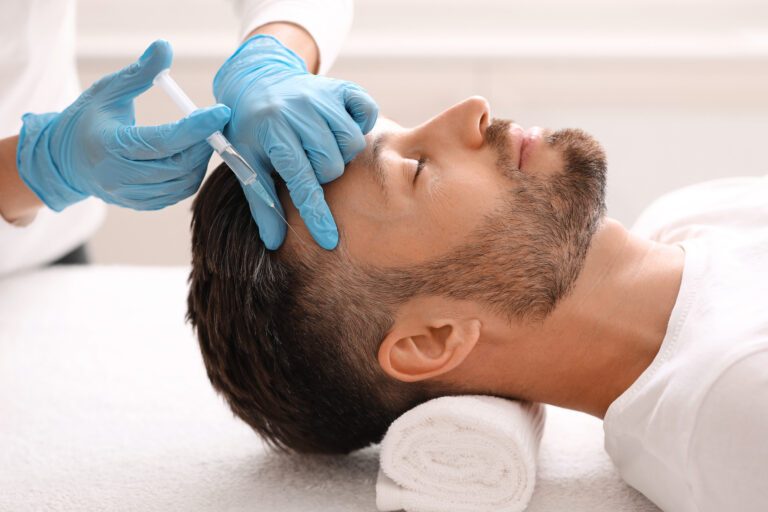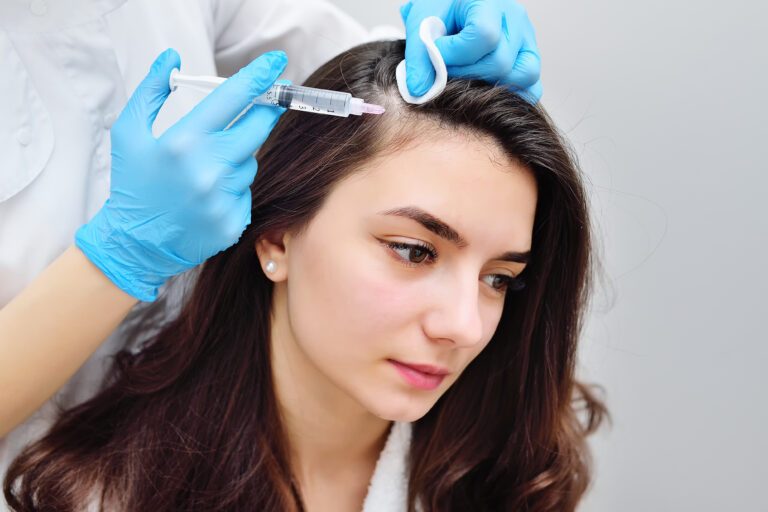What Hair Transplant Growth Results Look Like Over 12 Months
Post-hair transplant recovery is a long process and hair regrowth doesn’t come up quickly. To track your post-op progress, you should be aware of the hair transplant timeline.
During the first to third months, there won’t be any significant improvement in your hair growth. Yet, within 4–6 months the hair transplant results become visible. Finally, by 8–12 months, you’ll see the best and final hair growth.
In this article, we’ll cover what hair transplant growth results look like over 12 months. We’ll also discuss the stages of hair growth and provide you with a hair transplant growth chart, so stick around.
Stages of Hair Transplant Results
The results of a hair transplant aren’t the same for every man. One may experience growth in the latter stage, while others may see the improvements ahead of time.
While the hair transplant timeline isn’t universal, the results are definite and appear in four stages.
Stage 1: Temporary Growth Phase
The temporary growth phase starts on the day of the transplant. Here, the transplanted area accepts the follicular units, which become an integral part of the scalp.
It’s where all transplanted hair in the bald area begins to grow.
Stage 2: Shedding Phase
Commonly known as the ugly duckling stage, the shedding phase is the time your transplanted hair will randomly fall. This is completely normal. It’s just your hair grafts’ response to the trauma they experienced after the procedure.
It’ll last a few weeks and make your hair follicles look thinner and less dense.
Stage 3: Resting Period
Right after the shedding phase, the resting period or telogen phase starts. Here, the follicular units go into a dormant state.
During this period, you won’t notice any new hair. You can expect the dormancy period to last for 1–3 months.
Stage 4: New Hair Growth Period
After the resting phase, the hair from the transplanted areas will finally become visible. Then, a good amount of hair gradually builds until it gives your head a fuller, denser look.
Hair Transplant Timeline: 10 Days to 10 Years After Post-Hair Transplant Surgery
This hair transplant timeline will give you an idea of what to expect after the transplant.
However, note that it’s just a rough estimate based on the knowledge of surgeons and the experience of patients. It’s normal to see early progress or delayed results.
Hair Transplant After 10 Days
The first 10 days after the hair transplant are the crucial stage. You’ll experience swelling, itching, pain, and other discomforts.
Within the first 24–72 hours of the surgery, scabs will form on your head and last for 8 or more days. Avoid scratching them as scratching will endanger the grafts and cause infection.
Within this timeframe, new hair will come out of the transplanted region. Many will assume that the hair transplant is already showing progress, but this is just temporary. This sign usually lasts 3 weeks after the surgery.
Hair Transplant After 1 Month
The first month after the hair transplant marks the beginning of the shedding phase. You’ll notice that the transplanted units fall off, giving you the same hair look you had before the surgery. They’ll appear less dense and patchy.
The shedding phase can start in the 3rd week from the day of the hair transplant and continue up to 6th week. Everyone would start to worry and become anxious at this phase, but this is part of the natural process.
During this stage, you can massage the donor area to enable good blood flow and promote the growth of transplanted hair. You may also use Minoxidil or take Finasteride to encourage hair growth.
Hair Transplant After 2 Months
After 3–6 weeks of shedding, the transplanted hair will stay dormant. During this time, you won’t see any hair growth.
This stage is still part of the natural process and after surpassing this, you’ll begin seeing tangible results.
Hair Transplant After 3 Months
The 3rd month can kick-start the regrowth of the follicular units as they awake from the dormant stage. Fine, short, light, and wisp hair appear on some parts of the bald area.
At first, hair growth may start on one side, but soon after, it’ll spurt on the other side. It’s a natural occurrence and you shouldn’t worry about it.
New hair will continue to increase in height by 1 centimeter each month. Eventually, you’ll grow confident with the outcome.
Hair Transplant After 4 Months
After 4 months, you’ll see a gradual increase in the hair popping on the transplanted area. There will be growth in the mid-scalp and temples. Plus, distinguishable hair growth will form in the frontal hairline.
While the new hair can be satisfying, you’re still months away from getting the ultimate result. Regardless, others take this time to have their first haircut.
Hair Transplant After 5 Months
During this time, more hair strands will pop out, comprising about 30% or more of the hair regrowth. The hair strands may appear curly at first, but they’ll eventually return to normal in the following months.
Although your scalp may have healed after 5 months, you should follow the instructions given to you by your doctor. They may include consistent, gentle brushing and not exposing your head to too much sunlight.
Hair Transplant After 6 Months
You’ll see a significant increase in hair growth after 6 months of hair transplantation. By the end of the 6 months, about 50% of new hair has popped through. It’ll continue to grow thicker and denser, putting more volume on your scalp.
By 8–10 months, you’ll be enjoying more visible results as the transplanted hair thickens and darkens. You can start styling your hair as you wish during this phase.
Hair Transplant After 1 Year/12 Months
The hair transplant after 1 year will give optimal hair thickness and a more natural result to some patients. Often, this is attainable even before reaching the 12-month mark.
However, this can still be a growing phase for other patients, which means their hair hasn’t fully sprouted yet. Thus, the follicular units continue to grow and thicken until the 15th to 18th month.
It doesn’t conclude the efficiency of the results, though, as people have distinct physiology and are bound to progress in different ways. Typically, the hair in the crown area grows slower than the hair in the other regions.
Regardless if you hit the final stage after 12 months or at a much later time, it’ll all lead to one result—a long-lasting goodbye to hair loss and baldness.
Hair Transplant After 6 Months vs 1 Year
The hair transplant results become fairly visible half a year from the day of surgery.
However, comparing hair transplants after 6 months vs. 1 year gives you a better estimate of the results. While a hair transplant right after 6 months can give a satisfying turnout, this isn’t the complete result yet.
Often, the complete hair growth concludes after 1 year. Sometimes, after the 18-month mark.
By this time, you can expect fuller, thicker, darker, and more natural hair growth. None will suspect you had a hair transplant surgery.
Hair Transplant After 10 Years
A hair transplant is a long-lasting solution to hair loss and crown baldness. Even after 10 years from the day of surgery, the transplanted hair follicles will continue to grow and fill the spaces in your hair. However, just like the natural hair cycle, it’ll grow, fall, and regrow.
While the transplanted hair can produce hair for the rest of your life, according to Healthline, these hair follicles will thin. As you age, they won’t generate as much hair as they used to.
Furthermore, your doctor may suggest multiple sessions of transplant surgery for a better and more consistent result. Nonetheless, most men who went through hair transplant surgery are happy with the outcome of the initial surgery.
Hair Transplant Growth Chart: Summary From the First Month Onto the 12th Month
This hair transplant growth chart summarizes the progress you can expect after your hair transplant surgery. While the hair transplant growth timeline we provided here is the standard, know that your hair growth may progress differently.
Hair transplantation is a long process, so be patient and consult your dermatologist if you notice anything unusual.
| Hair transplant growth timeline | Hair transplant results | Post-surgery information |
| 1 week | Visible new hairline shape; tiny wounds heal | A crucial stage where following the special healthcare instruction of the surgeon is vital |
| 2–3 weeks | Transplanted hair in the bald area anchors in | You can brush your hair the normal way. Avoid strenuous activities that can cause sweating |
| 4–6 weeks | The hair follicles will shed; you’ll have thinner and patchy hair | Use Finasteride or any medications your dermatologist may suggest |
| 1–2 months | No visible progress as the follicular units stay dormant | Massage the donor area to encourage blood flow and promote hair follicles growth |
| 3–4 months | New hair will spurt from the transplanted area | You may have your first haircut by the end of the 3rd month |
| 5–6 months onwards | About 50% of the transplanted hair has grown | You can visit your doctor for a routine check-up |
| 12 months | Uniform density and uniform hair growth | It’s time to cut and style your has as you wish |







